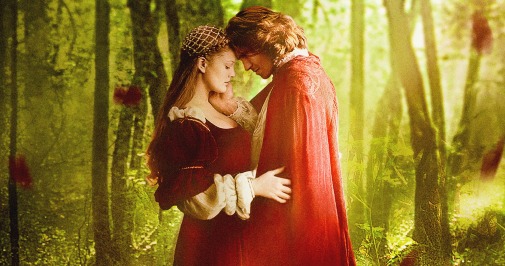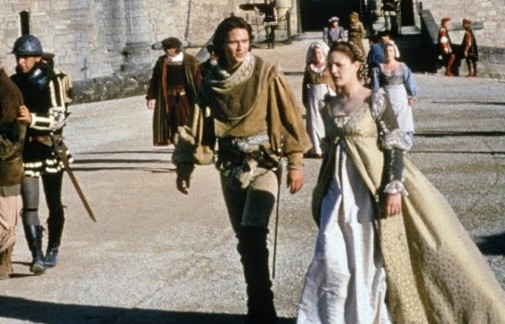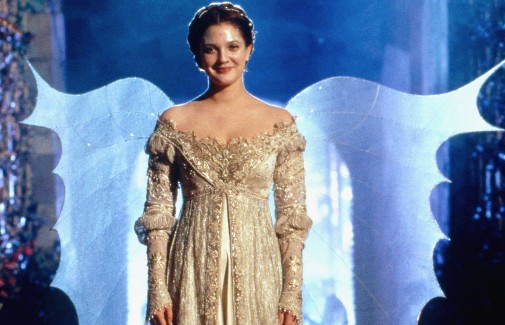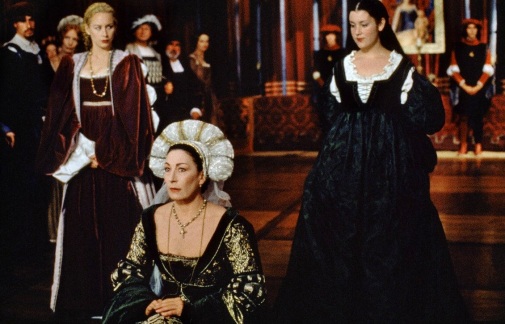
A quarter century ago, Hollywood remade the Cinderella story as it often does. Only this time, the fairytale was without fairies or any inkling of magic beyond the mystery of love. And Leonardo da Vinci, of course, for he's something of a wizard figure in the restyled narrative in which Perrault's classic tale is reworked through the Grimms' imagination and 1990s 'girl power' impetus. Da Vinci is also the movie's Achilles Heel, a miscalculation by the writing team of director Andy Tennant, Susannah Grant, and Rick Parks. Not that the misfortune wrecks the picture – Ever After is too charming for that.
Indeed, the Drew Barrymore vehicle remains an entertaining period rom-com all these years after its release, its strengths only glowing brighter in retrospect. How can one resist Jenny Beavan's costume designs, George Fenton's impassioned score, Anjelica Huston's sharp spin on the evil stepmother archetype, and so much more? This Ren-Faire Cinderella deserves celebration…
Long before the 2000-2010s fad for dark retellings of beloved stories of old, Ever After proposes an alternative route for painting a patina of authenticity over such material. Or, at the very least, Tinsel Town's idea of it. In essence, Tennant and 20th Century Fox appeal to historical re-contextualization as the key to modernizing Cinderella, stripping it of fantasy in search of period piece realism. But of course, this is realism as a vibe more than strict adherence to historical verisimilitude. For instance, everyone talks in anachronistic terms, slathered in faux-British accents and vague ideas of Renaissance pre-feminism feminists.

Our story starts with a bizarre trip to post-Revolution France, sometime in what should be the early 19th century after both the Brothers Grimm and Charles Perrault have published their versions of the Cinderella folktale. In this case, we follow the German duo as they have been called to an audience with a woman of royal blood. She's the anonymously-named Grande Dame, played by Jeanne Moreau bringing the gravitas of a cinematic monument to confer a taste of respectability to the summery treat. In the woman's words, though the Grimms' tale is better than their French colleague's, it's somewhat removed from the "truth."
For, in Ever After, Cinderella is what happens when history is shared through oral tradition over centuries, an unlikely love story heightened into an impossible folly. And so we go back in time to what should be 16th-century France during the reign of Francis I, when a little girl named Danielle eagerly awaits her father's return home with her new stepmother and stepsisters in tow. Auguste de Barbarac is a widowed merchant remarried to Baroness Rodmilla de Ghent, nobility tied with the bourgeoisie by matrimony, money and titles joined in marriage. Maybe happiness could have blossomed from the transaction if not for tragedy?
Not long after this arrival, Auguste perishes, his heart failing while on horseback, leaving Danielle to the care of an uncaring Rodmilla. Ten years pass, the once bright-eyed young girl reduced to servant in her own home, treasuring a copy of Thomas More's Utopia as the last gift her father left. Dear stepmother has only grown crueler with age, while sisters Marguerite and Jacqueline stand at odds in the perilous domestic theater. The former is the apple of her mother's eye, as mean-spirited as she is beautiful. The latter is treated with catty dismissiveness, her appearance a constant target for maternal censure. It's an unhappy home, but not one where hope has died.

That treasure lives within Danielle, burning firebrand hot, defiance born from the hot cinders and ready to lash out against injustice. She isn't a heroine who'll stand passively, fighting her stepmother's cruelty with the same verve she might throw an apple at a fleeing thief. Only, the morning we meet her, it is no larcenist who Danielle knocks over with fruit, but a fleeing Prince Henry trying to escape the fate of an arranged marriage. Their encounter is short, topped off with a pouch of gold coins to buy the maiden's secrecy, but that's the snowflake that unsets an avalanche. The ensuing plot is contrived, but I shall attempt to summarize it from here.
To free a family servant Rodmilla had sold to pay off debts, Danielle pretends to be a courtier using the prince's gold for her mission. Only Henry is back at the castle, having stopped a visiting Leonardo da Vinci from having La Gioconda stolen by Romani bandits, and he falls for the mysterious woman. In a panic, she assumes her dead mother's name, an alias she'll continue to use as commoner and prince grow ever closer, passion blooming between the two. Eventually, schemes unravel, everything crescendos to a masked ball disaster, and then, despite it all, a happy ending reveals itself to the characters who've earned the blessing.
Ignore that the real Prince Henry, later King Henry II of France, married Catherine de Medici instead of some fair maiden of low birth. Also, put aside the contradictory timelines conjured by the crossing of Francis I's rule and Leonardo Da Vinci's life, the finishing of La Gioconda, the publication of More's Utopia, and the briefly referenced divorce of Henry VIII from Catherine of Aragon. Despite the stabs at realism, Ever After is a fairytale, and it should be treated as such. If you're looking for a Cinderella buttressed within actual historical accuracy, look elsewhere. Honestly, that's no problem whatsoever, Leonardo's distracting presence aside.

Indeed, Jenny Beaven's costumes are such a delight because they reject the historical boundaries of early 16th-century France to go for a more pan-European period look, untethered from factuality. Most of the inspiration seems to be Italian with a couple of Germanic touches, a dash of pure Hollywood fantasy to make things sweeter – after all, what would Danielle's climactic gown be without those gossamer wings and modern glitter adornments? Forget pseudo-realism when dreams are preferable, be like Blanche Dubois and reject it for magic. Fenton's score is the same: lovely, opulent, and romantic, old-school big-screen joy the only reference that matters.
And yet, one must contend that using real locations instead of studio sets imbues robust materiality to the proceedings. It helps ground the characters' environments, if not their temporal place, indirectly providing their emotion with enough concrete specificity to bounce off of, to feel realer than real in the best movie tradition. That's especially true of Barrymore in one of her best performances, selling Danielle's resistance to being squashed with as much verve as she renders the bud of love open rose-like amid fancy-dressed comedy. The relationship between the physical buttressing of the setting and the performances goes further down the cast.
It helps balance Megan Dodds' cartoon bitchiness as Marguerite and Melanie Lynskey's loveliness as Jacqueline becomes more viscerally felt, winning over the audience's heart with little more than beleaguered kindness at the edge of scenes. If only Andrew Dunn's cinematography had more life to it past a couple of good camera movements. Then, Ever After would be more of a modern classic than just a nostalgic artifact that's always nice to rediscover. It's a comfortable film, not necessarily electrifying – apart from one element, where its aesthetic aims and fabulist delights intersect most perfectly.

She's Anjelica Huston, Oscar-winning paragon of one of Hollywood's greatest dynasties, standing proud and glamorous, arrogance given human shape with a balzo hat on top. Her Rodmilla is cruel to the bone, but not one-dimensional, for there's depth in her conflicting thoughts, internal life firing off inside the archetypical cliché. Notice how the actress portrays grief in a surge of messy emotion. It's the miasma-like crosshairs of jealousy for her stepdaughter as the recipient of the patriarch's last words, a wife's loss, a terrified and deeply selfish realization that she's forever stuck in this place she hates, left alone by the man who was meant to be her new lease on life.
Later, Huston will reveal how a bitter woman's hatred can be based on love, using vulnerability to better define her character's villainy. In one of Ever After's quieter passages, Rodmille considers Danielle's gaze, and, recognizing her late husband's eyes on the youth's face, a destabilizing strike of tenderness comes forth. It's instantly squashed, a nasty one-liner cutting through while her stare still shines with unshed tears. Miraculously, despite it all, one still delights in her downfall, for Huston never lets a humanizing impulse deny the demands of simplistic fairytale morality. So, by the end, Ever After leaves you in cozy contentment, no thorny contradiction to complicate the fun, no real-life historical truth to deny the movie's beautiful falsity.
Ever After is streaming on Disney+. You can also rent and purchase it on most of the major platforms.